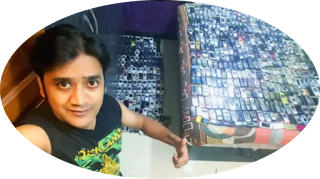You are not an astronomer: So how did you take a picture of the blackhole?
Catherine Bowman had a secret in her: an algorithm that she founded to create a photograph of the black eye, coordinating many things. He has not said anything to anyone other than his colleagues yet. It was then that Evelyn Harrison Telescope Group, a Katherine member, issued the first photo of the black album.
29-year-old Katherine, a master's doctoral researcher at Harvard-Smithsonian Center for Astrobiology, has worked on the algorithm for the past six years since graduating from MIT.
Katherine is one of three dozen computer scientists who use algorithm to collect data collected by the Evan Harrison Telescope Project, the global network of astronomers, engineers and mathematicians
54 million light years away
54 million light years away from the universe of the largest universe Viswidy of Messier (vicinity of Messier 87 -M87)
The telescopes across the globe collected the highest frequency radio waves
But Kathryn says that the optimal nature of atmospheric disturbance and scattered measurements can explain "endless photos" data. Well-designed algorithms had to deal with the alarms of the crisis.
Picture of black
The picture of the shared black hole was compared to a molten donut or chauer eye or rimandrand, and a set of various reclassifications.
We've got two photos blurred, and then we got an average picture of each other, "Katherine said. The ring surrounding M87 * has 6.5 billion sunsets. 'We were so unbelievable for this
Discussion with him after the release of the photograph of the black eye is as follows.
Q: You are not an astronomer. So how did you take a picture of the blacksmith?
Answer:
I come from the background of computer science and electrical engineering. I have received a doctorate degree in Computer Vision section to understand photos. I have heard about this project that takes the photograph of the blacksmith. Then you only know what you mean. But I participated in a discussion on the blacksmiths of Harvard University Astronomer Shep Tolmann, who conducted the Harrison Telescope Project. I do not know what he spoke, but when I left that meeting, this was what I wanted to do.
There is an interest in how we can see or measure things that are not visible to us. That's how we found special ways to combine tools and methods to measure non-measurable things with static tools
Q: What is the role of algorithm in this picture? Connect data from telescopes across the globe?
Answer:
We are spreading telescopes across the globe. For every two telescopes in the telescope line, we measure a unique frequency range. It tells about how quickly things change.
We only received partial information. It seems to be looking at a pixel in a picture (but it is a different kind). We actually found the scarcely and cluttered data, and the steps we are trying to find in the image of those measurements. These data were created by four different algorithms by computer imaging experts in four different unidentified groups




Comments
Post a Comment